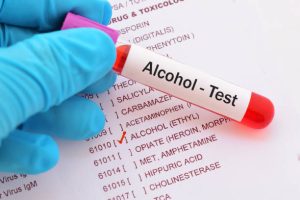 by HWC Managing Partner Josh Wright
by HWC Managing Partner Josh Wright
Managing Partner Josh Wright has developed a specialty over the last 25 years in the litigation of toxicology admissibility. Long a regionally-recognized drunk driving victim’s lawyer, the issue of biologic sample admissibility has developed in the law, and Josh has been on the forefront of the topic–litigating alcohol and drug-related cases in State and Federal courts in multiple states, and constantly writing and lecturing on the topic. In fact, part of the current Alabama Beverage Control regulations were written by Josh in 2011-2012.
“Admissibility of biologic samples, including urine and blood results, has become a complicated legal issue over the last 20 years in Alabama and our surrounding states,” Josh stated. “It’s not as simple as saying ‘because that driver had alcohol in his system, the jury gets to hear that evidence against him,’ or ‘because that industrial worker had drugs in his system when he caused the injury, the jury will hear that evidence.'” “If you don’t know and understand the ever-changing science of toxicology admissibility, critical evidence may never be heard by your jury in your case.”
For example, Alabama case law strongly supports excluding urine tests that may reveal the presence of alcohol and drugs in a defendant’s system prior to an accident under certain circumstances. The Courts have held urine-only tests should be excluded because they are often not reliable, legally irrelevant; and the value of their admission is often substantially outweighed by the danger of unfair prejudice caused to the defendant.
 In order to get drug and alcohol urine test results offered into evidence, it is important to understand the science, and know what a “presumptive positive” urine screening test is, and what it is not. By itself, a presumptive positive urine test is not a definitive finding about substances in a patient’s system at the time of an accident, does not define actual quantitative levels of a substance in the person’s system and cannot be used to establish a level of impairment at the time of an accident.
In order to get drug and alcohol urine test results offered into evidence, it is important to understand the science, and know what a “presumptive positive” urine screening test is, and what it is not. By itself, a presumptive positive urine test is not a definitive finding about substances in a patient’s system at the time of an accident, does not define actual quantitative levels of a substance in the person’s system and cannot be used to establish a level of impairment at the time of an accident.
A good example of this trend to exclude urine-only testing is found in Pearce v Estate of Day, 2022 Ala. LEXIS 40 (Ala. May 27,2022). In Pearce, the plaintiff filed suit after a car accident. The plaintiff wanted to introduce evidence of the defendant’s marijuana used sometime between 24 and 48 hours prior to the accident. The Alabama Supreme Court noted that without being able to link the drug use to the accident, or a level of impairment, the evidence would not be admissible. Additionally, in Carter v. Haynes, 267 So. 3d 861 (Ala. Civ. App. 2018), Carter argued that the trial court improperly excluded evidence of Hayne’s admitted use of marijuana and methadone on the day of the accident.
The trial court excluded the urine evidence, and the Court of Civil Appeals affirmed. The Court of Civil Appeals held that without evidence of impairment at the time of the accident, the mere fact of prior drug use was not relevant, and the trial court was within his discretion to exclude the evidence, especially when there could be no evidence that the drugs actually caused the accident:
There is no evidence of a casual relationship between the accident and Hayne’s drug use at least six hours before the accident, nor is there any evidence trending to show that Haynes was impaired at the time of the accident. We disagree with Carter that the accident itself gives rise to an interference that Haynes was impaired at the time of the accident, we cannot say that the trial court abused its discretion in excluding the evidence of Hayne’s use of marijuana and methadone on the ground that it was unduly or unfairly prejudicial to Haynes.
See Carter v. Haynes, 267 So. 3d at 867 (Emphasis added); see also Batton v. Oak Invest Group Corp, 2022 WL 662295* 4 (N.D. Ala. March 4, 2022) (a defendant trucker tested positive for marijuana in a post-accident urinalysis, but the Court excluded the evidence stating, “the relevant question is not whether the driver had marijuana in his system at the time of the accident; instead, the issue is whether he was impaired at the time of the accident.”)
As these cases clearly highlight, a plaintiff must generally show more than a presumptive positive urine test to support admission of drugs and alcohol in a case. But, the lawyers at Hollis Wright — over 25 years of litigating toxicology cases — have learned how to legally maneuver positive urine results into admissible evidence. Among other reasons, (1) by showing substantial levels of impairment and relevancy from other evidentiary sources in conjunction with the urine testing results, (2) by supporting the urine testing results with preserved blood samples for testing results with preserved blood samples for testing, (3) by establishing urine results are material to the case for reasons other than causation and impairment, and (4) by securing example purchasing, patterns and habit of the defendant for taking psychomotor-impairing drugs consistently.
These are just a few of the many ways urine toxicology can be admitted and converted into admissible evidence. Josh and the firm lawyers have secured some of the nation’s best toxicology experts in these cases, to ensure that urine toxicological samples are in fact converted into admissible evidence, or held out of evidence as the case may be. “If you don’t completely understand the science and law on changing toxicology issues, you may fail to admit critical admissible evidence, or in fact allow non-admissible evidence in,” said Josh. “Getting the right lawyer, who understands how to convert biologic samples into admissible evidence matters, especially if you want your case to have substantial value. Choose your lawyer wisely.”
 Alabama Injury Law Blog
Alabama Injury Law Blog

